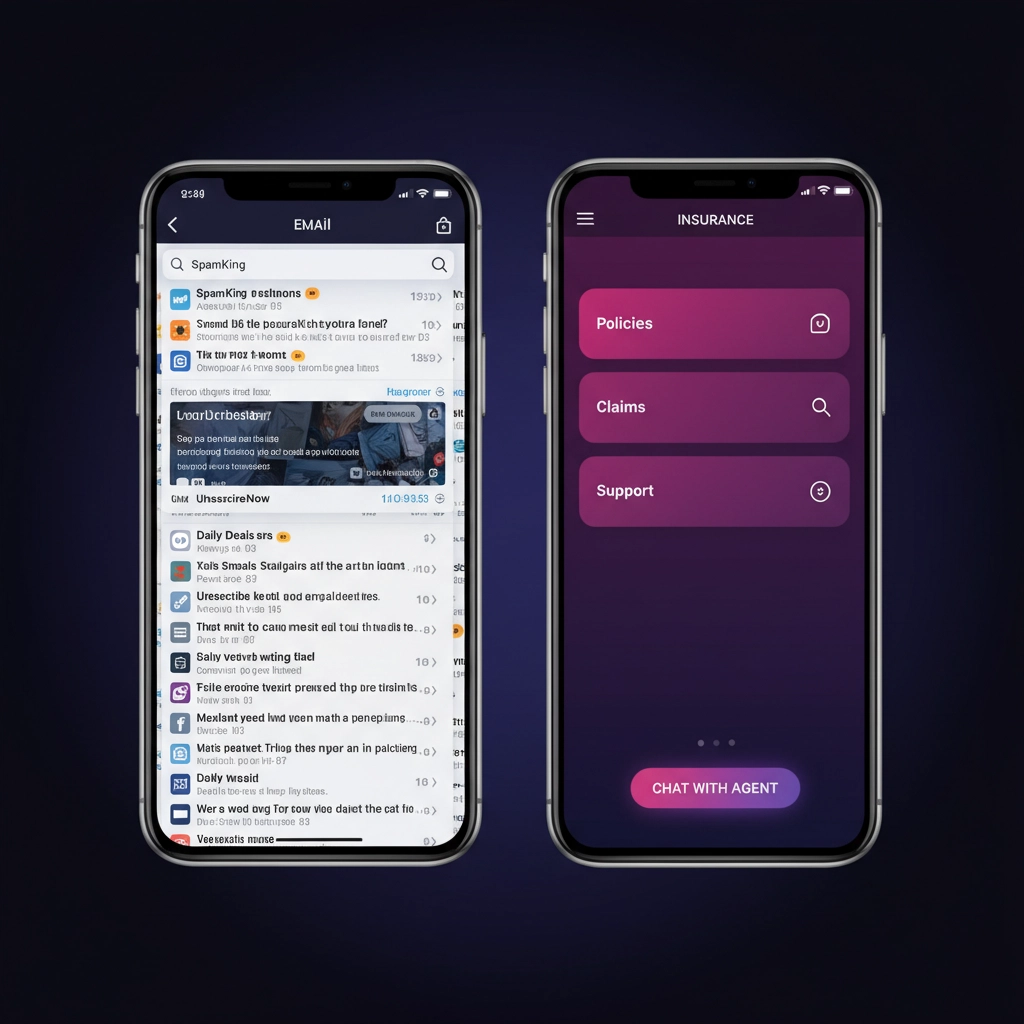Independent insurance agents across Alabama and South Carolina are losing valuable time and potential sales due to outdated form processes. While direct writers leverage streamlined digital platforms, many agents still struggle with paper-heavy workflows that create bottlenecks and frustrated customers. The insurance technology landscape has evolved dramatically, yet form-related mistakes continue to plague agency operations and impact bottom lines.
Recent industry data reveals that form processing errors cost independent agents an average of 3.2 hours per week in rework and customer follow-up calls. This translates to approximately $8,400 in lost productivity annually for each agent. More concerning, 23% of potential automobile insurance sales in South Carolina are abandoned due to lengthy form completion processes, while Alabama agents report similar challenges with vehicle inspection documentation.
The solution lies in embracing scan insurance technology that transforms traditional paper workflows into efficient digital processes. Modern mobile applications now offer sophisticated form automation capabilities that eliminate common errors while accelerating sales cycles.
Mistake #1: Manual Data Entry Creates Transcription Errors
Traditional insurance forms require agents to manually transfer information from documents like driver's licenses, vehicle registrations, and inspection certificates. This process introduces human error at multiple touchpoints, with studies showing transcription mistakes occur in approximately 18% of manually entered forms.
Alabama vehicle inspection form processing exemplifies this challenge. Agents spend considerable time copying VIN numbers, odometer readings, and inspection dates from physical documents. A single digit error in a VIN can delay policy issuance by days and create compliance issues.

Scan insurance technology eliminates transcription errors through optical character recognition (OCR) capabilities. Advanced mobile applications can instantly capture and process document information with 99.7% accuracy rates. Agents simply photograph required documents, and the system automatically populates form fields with extracted data. This technology reduces processing time from 8-12 minutes to under 90 seconds while virtually eliminating data entry mistakes.
Mistake #2: Incomplete Form Submission Due to Missing Required Fields
Insurance forms contain numerous mandatory fields that vary by state regulations and coverage types. Agents frequently submit incomplete applications, triggering time-consuming back-and-forth communications with underwriters and frustrated customers. Industry research indicates that 31% of initial form submissions require additional information before processing can continue.
This challenge proves particularly acute for automobile insurance in South Carolina, where specific disclosure requirements and liability coverage selections must be properly documented. Missing or incorrectly completed fields can delay policy binding and create gaps in coverage that expose both agents and customers to liability risks.
Digital insurance sales platforms address this issue through intelligent form validation systems. These applications provide real-time guidance, highlighting required fields and preventing submission until all mandatory information is completed. Progressive disclosure techniques present relevant sections based on coverage selections, ensuring agents capture all necessary data without overwhelming customers with irrelevant fields.
Mistake #3: Poor Document Organization and Storage
Paper-based processes create document management nightmares for independent agents. Physical files become disorganized, documents get misplaced, and retrieval takes excessive time. The average agent spends 47 minutes per week searching for customer documents, representing significant productivity losses.
Regulatory compliance requirements compound this challenge. Agents must maintain detailed records for audit purposes, but traditional filing systems make it difficult to quickly locate specific documents when regulators or insurance companies request information. Document retention periods vary by state, adding complexity to storage management.

Mobile technology for agents transforms document management through cloud-based storage and automatic organization systems. Scan insurance applications create digital file folders for each customer, automatically categorizing documents by type and date. Advanced search capabilities allow agents to locate any document within seconds using customer names, policy numbers, or document types. This system ensures compliance while dramatically reducing administrative overhead.
Mistake #4: Inconsistent Customer Experience Across Agents
Independent agencies often struggle with consistency when multiple agents handle customer interactions. Different agents may use varying form completion approaches, creating confusion and potentially missing important coverage discussions. This inconsistency damages the agency's professional reputation and can lead to errors and omissions claims.
Training new agents on complex form requirements proves time-intensive and expensive. Each state's unique requirements, combined with multiple insurance company variations, create a steep learning curve that delays new agent productivity. Experienced agents may develop shortcuts that work but aren't systematically documented for others to follow.
Standardized digital platforms ensure consistent customer experiences regardless of which agent handles the interaction. Built-in workflows guide agents through proper procedures, ensuring all necessary questions are asked and all required information is collected. New agent onboarding accelerates significantly when technology provides structured guidance through complex processes.
Mistake #5: Inability to Process Applications Outside Office Hours
Traditional paper processes limit agents to office-hour operations, creating competitive disadvantages against 24/7 digital competitors. Customers increasingly expect immediate service and same-day policy binding, but paper-dependent workflows cannot accommodate these expectations.
Weekend and evening sales opportunities represent significant revenue potential, particularly for automobile insurance sales where customers often shop during personal time. Agents using outdated processes lose these opportunities to competitors with digital capabilities.

Insurance technology for agents enables anywhere, anytime form processing through mobile applications. Agents can complete applications, process payments, and bind coverage from customer locations, homes, or while traveling. This flexibility dramatically expands selling opportunities and improves customer satisfaction through immediate policy delivery.
Mistake #6: Complicated Signature and Verification Processes
Insurance regulations require customer signatures on numerous forms and disclosures. Traditional processes involve printing documents, obtaining wet signatures, and scanning completed paperwork back into systems. This multi-step approach creates delays and complications, particularly when customers need to review and sign multiple documents.
Remote customers present additional challenges. Mailing documents back and forth extends processing timelines and creates opportunities for documents to be lost or damaged. Email-based processes raise security concerns and may not meet regulatory signature requirements.
Digital signature integration streamlines this process while maintaining legal compliance. Customers can review and electronically sign documents on mobile devices, with completed forms immediately available for processing. Advanced applications ensure signature authenticity through biometric capture and audit trails that satisfy regulatory requirements.
Mistake #7: Limited Real-Time Communication and Updates
Paper processes create communication gaps between agents, customers, and insurance companies. Customers frequently call to check application status, creating interruptions and requiring agents to manually research progress. This reactive communication approach frustrates customers and consumes valuable agent time.
Insurance companies may request additional information or documentation during underwriting, but paper-based systems make it difficult to quickly notify customers and collect required materials. Delays in communication extend processing timelines and may result in coverage gaps or policy cancellations.

Modern platforms provide automated status updates and real-time communication capabilities. Customers receive text notifications when applications are received, when additional information is needed, and when policies are bound. Agents can instantly communicate with customers through integrated messaging systems, accelerating information exchange and improving satisfaction levels.
The Technology Solution: Transforming Agent Operations
Scan insurance technology represents a fundamental shift from reactive, paper-based processes to proactive, digital workflows. These solutions address all seven common mistakes through integrated platforms that streamline operations while improving customer experiences.
The most advanced systems combine document scanning, intelligent form completion, cloud storage, digital signatures, and real-time communication into unified applications. Agents can handle complete transactions from initial quotes through policy binding using single mobile devices.
Implementation proves surprisingly straightforward. Leading platforms require minimal training and integrate with existing agency management systems. Cloud-based deployment eliminates IT infrastructure requirements, while mobile-first design ensures accessibility across different devices and locations.
Results speak volumes about technology impact. Agencies report 67% reductions in form processing time, 89% decreases in transcription errors, and 45% improvements in customer satisfaction scores. New agent productivity increases by 127% when supported by comprehensive digital tools rather than traditional paper processes.
Ready to Transform Your Agency Operations?
The insurance industry continues evolving toward digital-first customer experiences. Independent agents must embrace technology solutions that eliminate form-related mistakes while improving operational efficiency. Scan insurance technology provides the competitive advantage necessary to compete with direct writers and digital-native competitors.
Don't let outdated processes cost you sales and customer satisfaction. Experience the difference that modern insurance technology can make for your agency operations.
Get started today:
- Visit insurescan.com to learn more about our comprehensive platform
- Download the InsureScan app for iOS: App Store Download
- Download the InsureScan app for Android: Google Play Store
Transform your agency's form processes and start closing more sales with fewer mistakes. Your customers: and your bottom line( will thank you.)

